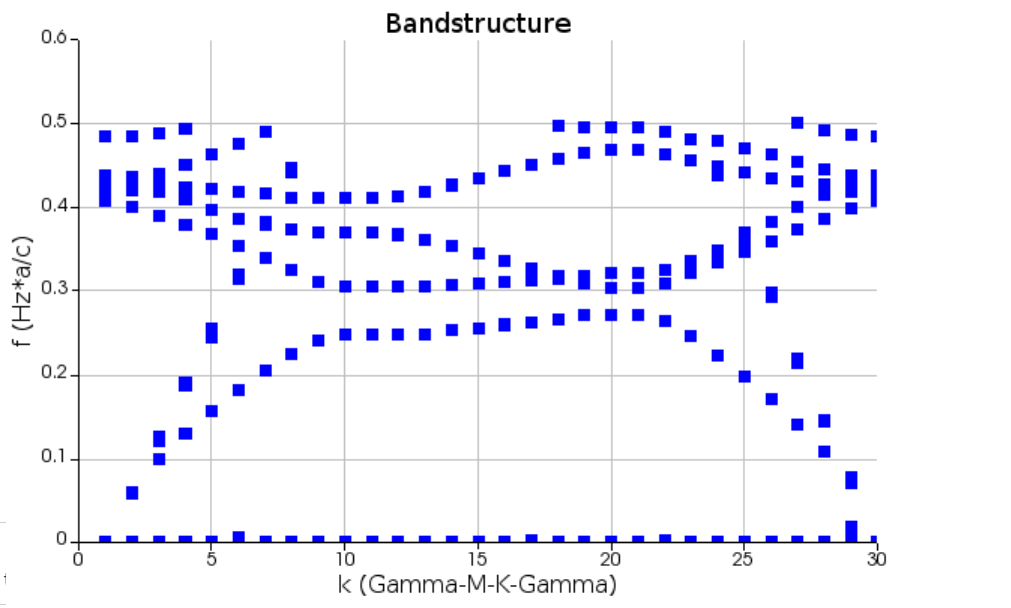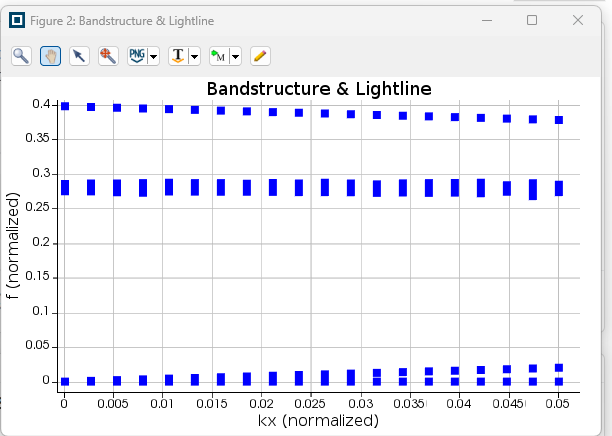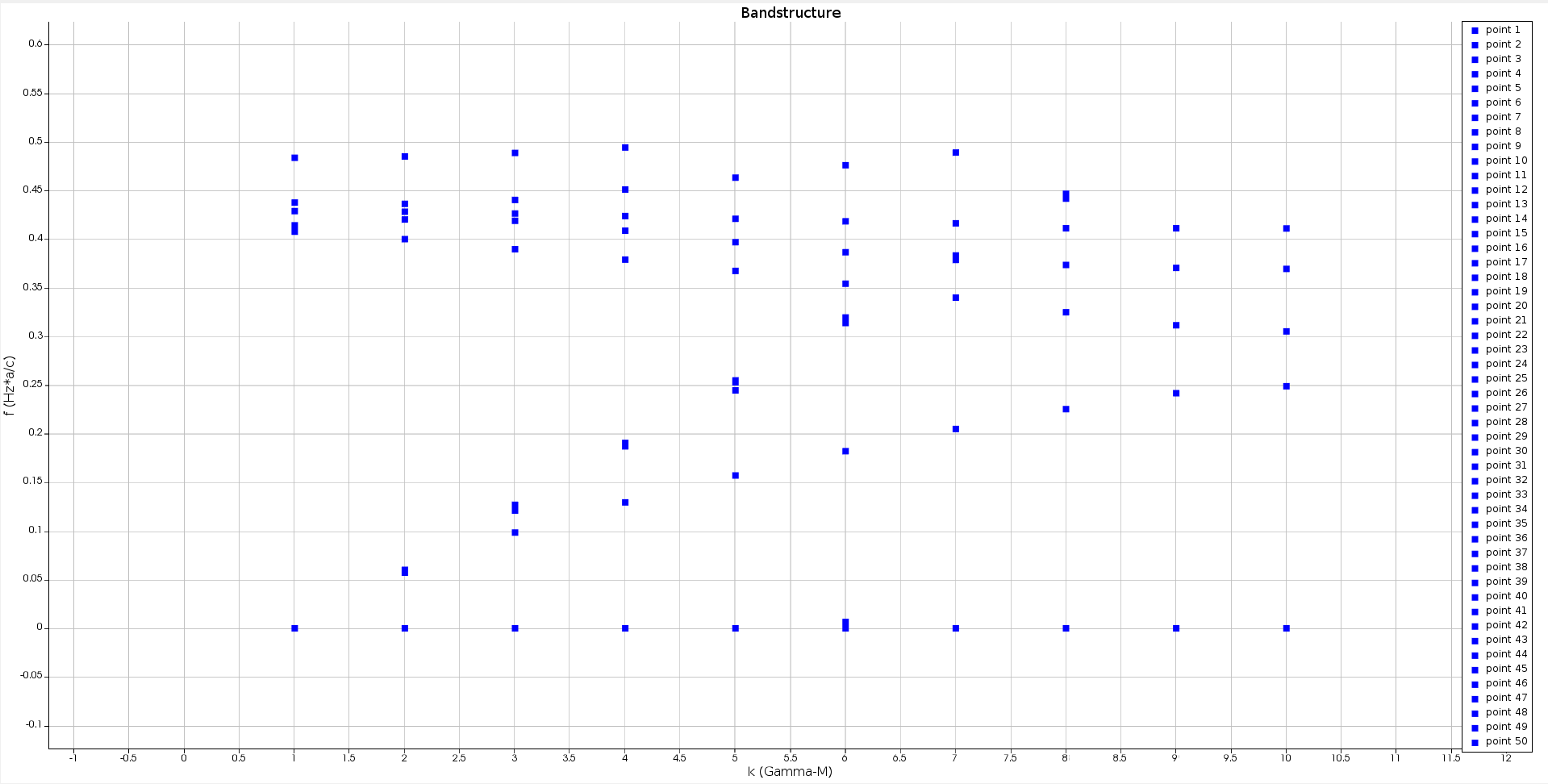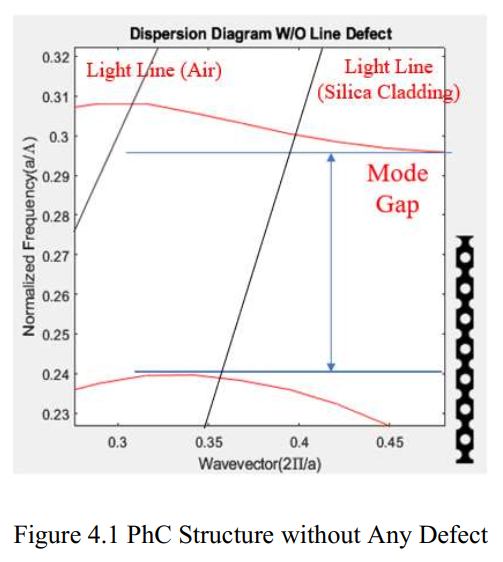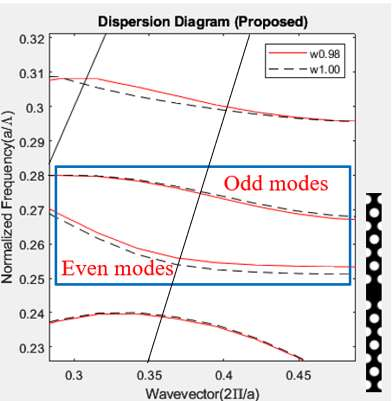TAGGED: -Photonic-crystal, bandgap, bandstructure
-
-
August 23, 2023 at 4:40 am
-
August 24, 2023 at 10:38 pm
Guilin Sun
Ansys EmployeeMay I know what the " normalized data " mean?
the 2nd graph is only a very small part of graph 1, where its kx is from 0 to 0.05 only. This is the relative k vector. In graph 1, the k is actually the sweep points of totaling 30 (each direction 10 points).
In both graphs the frequency is normalized with periodicity. Please check the script how the vertical axis is normalized. Fig 1 shows f_plot=f_actual*a/c and graph 2 should be the same although it does not mention.
-
September 6, 2023 at 12:54 am
Muhammad Danial Haziq Azizan
SubscriberHye,
If we take the graph for the x-axis from Gamma to M which is the light line of air, the value starting from o until 10. Then, how to make it normalized from 0 to 0.5 only? cause I need to verify my simulation from the paper reference. Is it possible to get a graph in a curve line, not the point? I already extracted the data, but I do not understand the connection of points from the graph.
-
September 6, 2023 at 12:55 am
Muhammad Danial Haziq Azizan
SubscriberHere the data
Bandstructurek (Gamma-M), f (Hz*a/c)1, 0.4077792, 0.05720573, 0.09843484, 0.1293955, 0.1571426, 0.006549097, 0.2049228, 0.2253129, 0.24168610, 0.248831Bandstructurek (Gamma-M), f (Hz*a/c)1, 0.4143272, 0.06005883, 0.1210764, 0.1871055, 0.2445576, 0.1821447, 0.3399218, 0.3249429, 0.31152210, 0.305291Bandstructurek (Gamma-M), f (Hz*a/c)1, 0.4289222, 0.400043, 0.1245944, 0.1878775, 0.252926, 0.3138037, 0.3787598, 0.3735559, 0.37050810, 0.369488Bandstructurek (Gamma-M), f (Hz*a/c)1, 0.4376782, 0.4203333, 0.1269424, 0.1905655, 0.2548456, 0.3153197, 0.3788228, 0.4112549, 0.4112310, 0.411054Bandstructurek (Gamma-M), f (Hz*a/c)1, 0.4837722, 0.4282343, 0.3896814, 0.3789995, 0.3674596, 0.3195577, 0.3832668, 0.4417929, 010, 0Bandstructurek (Gamma-M), f (Hz*a/c)1, 02, 0.4364043, 0.4189374, 0.4087695, 0.3970216, 0.3542387, 0.4163858, 0.4467599, 010, 0Bandstructurek (Gamma-M), f (Hz*a/c)1, 02, 0.4850623, 0.4263834, 0.4238365, 0.4210656, 0.3865837, 0.4891058, 09, 010, 0Bandstructurek (Gamma-M), f (Hz*a/c)1, 02, 03, 0.440424, 0.451075, 0.4632936, 0.4184357, 08, 09, 010, 0Bandstructurek (Gamma-M), f (Hz*a/c)1, 02, 03, 0.488744, 0.4943295, 06, 0.476067, 08, 09, 010, 0Bandstructurek (Gamma-M), f (Hz*a/c)1, 02, 03, 04, 05, 06, 07, 08, 09, 010, 0 -
September 6, 2023 at 2:03 pm
Muhammad Danial Haziq Azizan
SubscriberFigure 3. Wavevector of Gamma-M
I just took out the part of Gamma-M as this region has light line air (n=1) which is a straight line by referring to the book PhC. But how to change the data from 0-10 to 0-0.5 like in Figure 4.1 cause I need to compare while using MPB?
In this graph, there are no even and odd modes that exist since there is no defect from the example. How to get these two modes? Based on Figure 2 above, do these two modes appear since it has a line defect as it waveguide?
-
September 6, 2023 at 3:20 pm
Guilin Sun
Ansys Employeenice curves!
converting k points to k value:
The k points are relative to 2pi/a, so you can simply multiply 2pi/a to get k value.
modes:
you need to use frequency domain monitor to record 1 or 2 frequency points on the band, and then check the mode symmetry property. Please note that now you will need much longer simulation time, and most likely need to use apodization: https://optics.ansys.com/hc/en-us/articles/360034902473-Understanding-time-apodization-in-frequency-domain-monitorsSince you only need to know the symmetry property, simulation time may not be too long with apodization. You can test how long it is proper.
-
September 6, 2023 at 8:08 pm
-
September 6, 2023 at 8:21 pm
Muhammad Danial Haziq Azizan
Subscriberconverting k points to k value:
The k points are relative to 2pi/a, so you can simply multiply 2pi/a to get k value.
What means by this? Seem the k points are from 1 until 10 and my lattice constant(a) is 420nm. Can you show me the k values if convert the 1-10 k points?
-
September 7, 2023 at 2:56 pm
Guilin Sun
Ansys Employee" k points are from 1 until 10",so you know they are points, not k values. From 0 to 05 kmax it has 10 points, you should be able to convert to actual k values. Please check the script in "model":
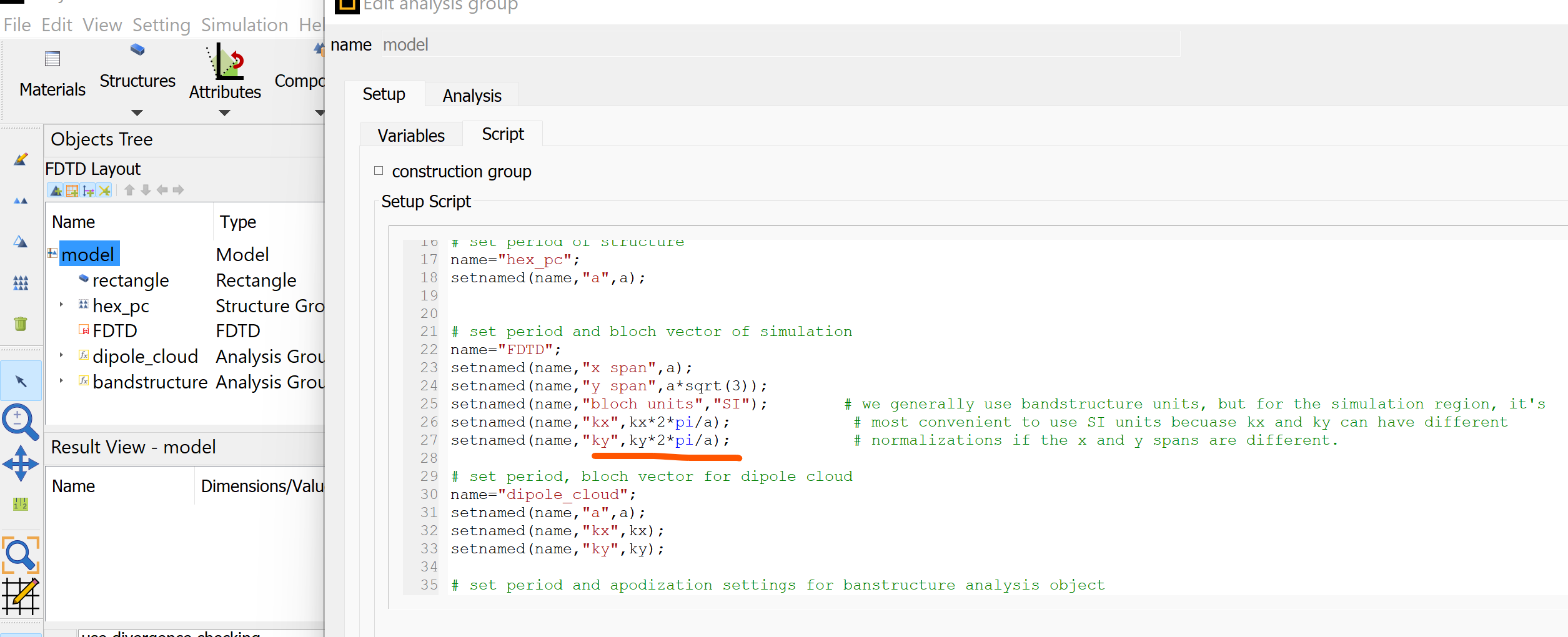
The kx in sweep is the point, and the actual kx is shown in the script.
For the modes, please check if you have used symmetry BCs to avoid one of the modes. FDTD solves Maxwell Equations, as long as the dipole and time monitor settings are proper, plus the boundary, you should be able to fid the modes. It is difficult for us to diagnose with simple descriptions. Please read the examples, understand how does the band structure is calculated. Using ready-to-use tools can lead to problems that the physics is missing.
-
- The topic ‘Bandstructure of planar photonic crystal with a hexagonal lattice’ is closed to new replies.



-
4678
-
1565
-
1386
-
1242
-
1021

© 2025 Copyright ANSYS, Inc. All rights reserved.

